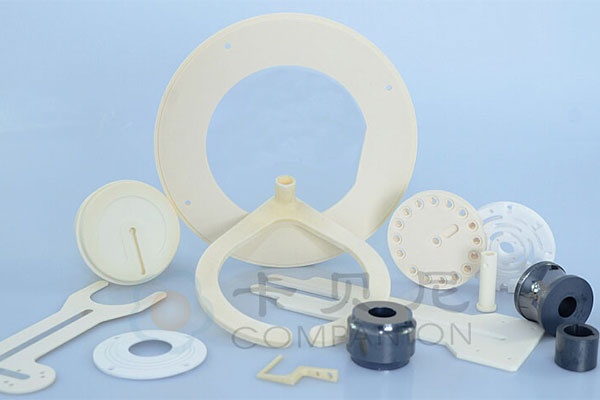
Publish date: 2025-01-23
Have you ever wondered why ceramic back panels in smartphones are not only aesthetically pleasing but also offer excellent wear and scratch resistance? How do high-temperature structural ceramic materials in car engines enhance performance and efficiency? And why are medical devices and ceramic surgical implants favored, helping to improve patients' treatment experience?
What kind of power lies behind these seemingly ordinary ceramic materials?
Today, Companion will take you to understand what "structural ceramics" are.
Structural ceramics, also known as engineering ceramics or high-temperature structural ceramics, are advanced ceramic materials used in high-temperature, high-stress, and corrosive environments. They have excellent mechanical properties, high-temperature resistance, corrosion resistance, and wear resistance, allowing them to be used under harsh operating conditions that are difficult for metal and polymer materials to handle. Therefore, structural ceramics play a key role in promoting the development of certain emerging technologies and demonstrate broad application prospects and potential economic and social benefits in fields such as electronic engineering, energy, machinery, automobiles, metallurgy, chemical industry, biology, and medicine.

(1) Oxide Ceramics: Such as alumina, yttria, zirconia, mullite, toughened zirconia, zircon, aluminum titanate, etc.;
(2) Nitride Ceramics: Such as aluminum nitride, silicon nitride, boron nitride, sialon, etc.;
(3) Carbide Ceramics: Such as silicon carbide, titanium carbide, boron carbide, etc.;
(4) Boride Ceramics: Such as titanium boride, zirconium boride, etc.
(1) Electronic Ceramics: Electronic structural ceramic materials are valued for their excellent electrical insulation and thermal conductivity and are widely used in electronic components, sensors, and power devices.
(2) Mechanical Ceramics: Mechanical ceramics mainly utilize their high wear resistance and high hardness properties and are widely used in mechanical ceramic seals, cutting tools, bearings, gears, and other mechanical parts.
(3) Engine Ceramics: Thermal insulation engines made of ceramic materials are widely used in gas turbine blades, piston tops, and inserts, etc., due to their heat resistance, damage resistance, high strength, high toughness, lightweight, and excellent thermal insulation properties.
(4) Chemical Ceramics: The corrosion resistance of ceramics makes them an ideal choice for crucibles, heat exchangers, and various corrosion-resistant components used in the smelting of non-ferrous metals and rare metals.
(5) Bioceramics: Bioceramics are often used in the medical field, such as bone repair and regeneration, orthopedic implants, and dental repair materials, due to their excellent biocompatibility and stability.
1. High-Temperature Resistance: Structural ceramics, with their high melting points and extremely low expansion coefficients, can still maintain stable physical and chemical properties in high-temperature environments or withstand drastic temperature changes in rapid cooling and heating situations without deformation or cracking, ensuring the lasting reliability of ceramic materials under high-temperature operations.
2. High Strength and High Hardness: The compressive strength and hardness of structural ceramics are remarkable because they have a dense crystalline structure that can easily cope with the challenges of high-load mechanical stress.
3. Corrosion Resistance: Structural ceramics, such as silicon nitride and alumina, exhibit good corrosion resistance to most chemicals due to their inherent chemical stability and non-metallic properties, making them suitable for harsh environments such as chemical smelting.
4. Electrical Insulation: The electrical insulation of structural ceramics can effectively block the flow of current. Coupled with their low dielectric constant, it further enhances the ability to prevent current leakage and short circuits, making them the ideal choice for insulators, precision electronic components, and high-voltage equipment, ensuring the safe and stable operation of electrical systems.
5. Wear Resistance: Structural ceramics have a high surface hardness and good wear resistance, making them suitable for working environments with severe wear, such as cutting tools and abrasives.
As a professional solution provider in the field of advanced materials, Companion always adheres to the forefront of innovation. We not only focus on structural ceramics, our core area of expertise, but also are extensively involved in the research and development and production of various advanced materials. In the field of structural ceramics, we invest a lot of resources in in-depth exploration, aiming to create high-performance and high-reliability structural ceramic products. We strictly control the purity, particle size distribution, and dispersibility of ceramic granulation powder, and we reasonably optimize the forming compression and sintering process parameters to effectively improve the comprehensive performance of ceramic powder granulation, thereby precisely customizing high-quality structural ceramic products that meet the diverse needs of our customers.